The Mission Spiritus Oman Expedition has successfully completed Phase 1, a monumental undertaking that pushed the team through 240km of the Empty Quarter’s unforgiving terrain. Over the course of six grueling days, Alan Chambers MBE, Billy Perham, and David Segel faced extremes of temperature, challenging landscapes, and the physical and mental toll of trekking in one of the world’s harshest environments.
From collecting vital sand samples to navigating towering dunes, the team’s determination and resilience have been evident every step of the way.
Starting the Journey
The expedition began on January 5th with a four-hour infill journey by 4×4 vehicles, crossing the Dhofar Mountains that separate Oman from Yemen. Descending into the valley floor of the Empty Quarter, the team embarked on their mission to traverse one of the most remote and inhospitable deserts on Earth.
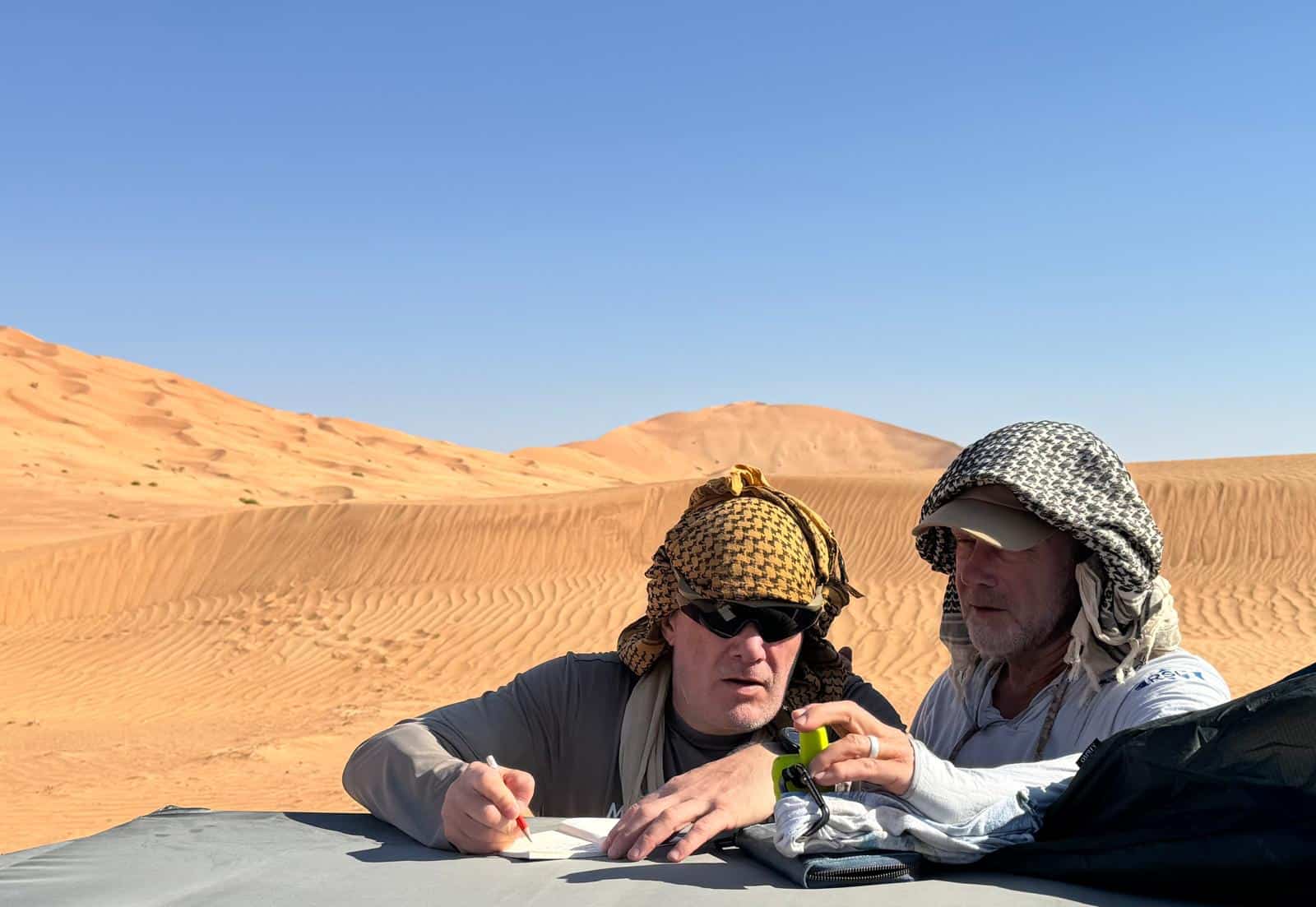
“The sand is as fine as we have ever experienced and blows with every gust of wind,” shared David Segel in a field update.
This initial entry into the Empty Quarter marked the start of a journey that would test every aspect of their endurance, from the physical strain of trekking to the mental challenges of navigating an environment devoid of life.
Daily Life in the Desert
Life in the Empty Quarter is dictated by the extremes of the environment. The team rose before dawn each day, often starting their trek as early as 4am, using headlamps to navigate the darkness and maximise progress during the cooler morning hours.
“We left camp at 04:00 this morning to make miles under the cool of the pre-dawn moon,” David reported. “After six hours and 16km, we paused to tend to repairs – blister kits and gauze wraps were applied to bleeding feet and swollen joints.”
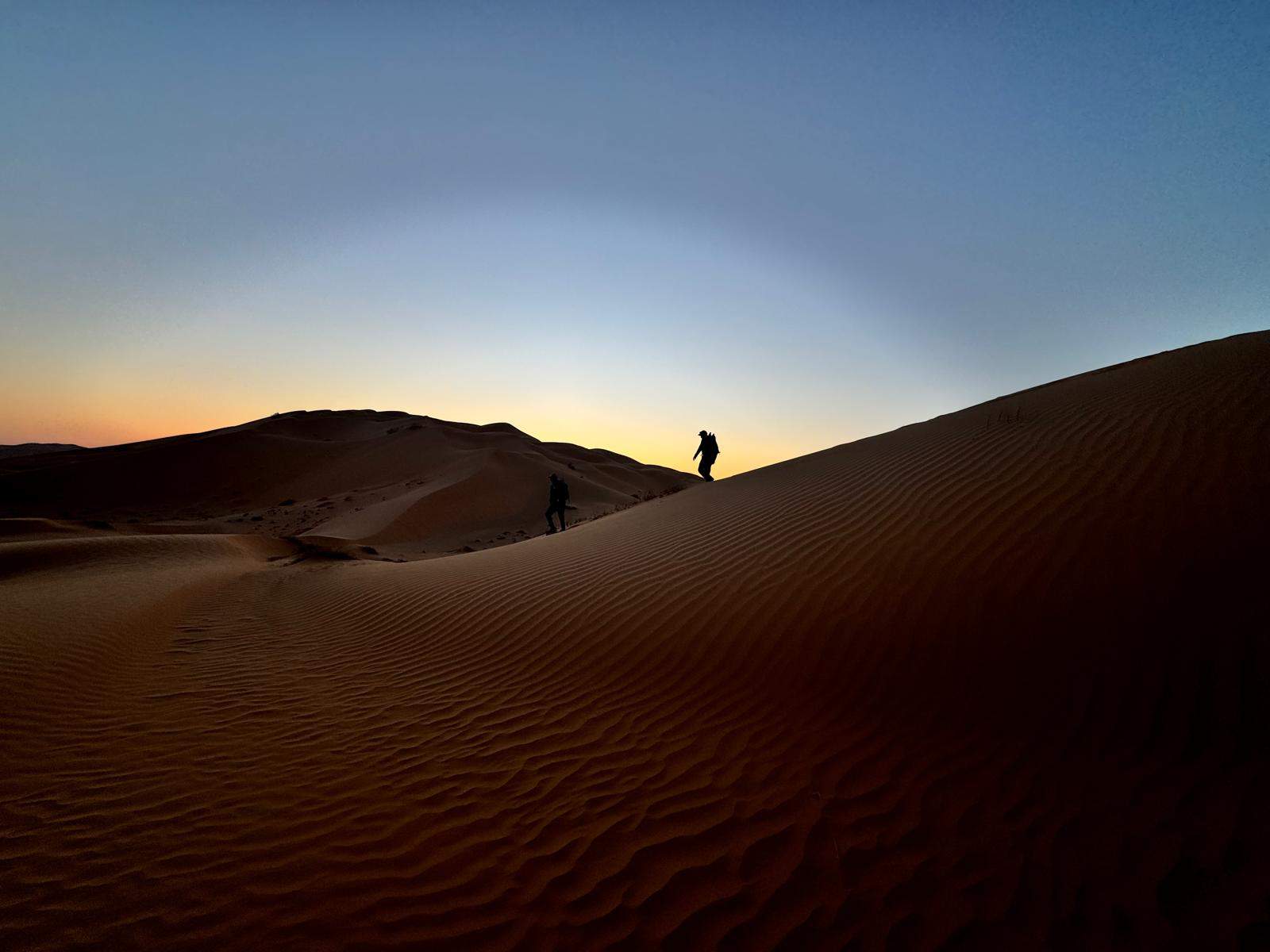
The midday heat, which reached up to 100°F (38°C), forced the team to take shelter under makeshift tarps, allowing them to rest and recover before continuing their trek in the afternoon. Despite the physical toll, the team adjusted to the demands of the desert. “Marching across the soft desert sand makes for taxing work on often unused muscles. Our bodies are slowly adjusting, and we are getting stronger and more accustomed to the demands,” David explained.
Leadership and Team Resilience
Alan Chambers, the expedition leader, played a critical role in keeping the team focused and motivated. “Alan keeps the team focused and confident, regularly checking on our mental and physical state to ensure long-term success,” David shared. His leadership helped the group maintain their resilience in the face of challenges, from physical exhaustion to unforeseen encounters with desert wildlife.
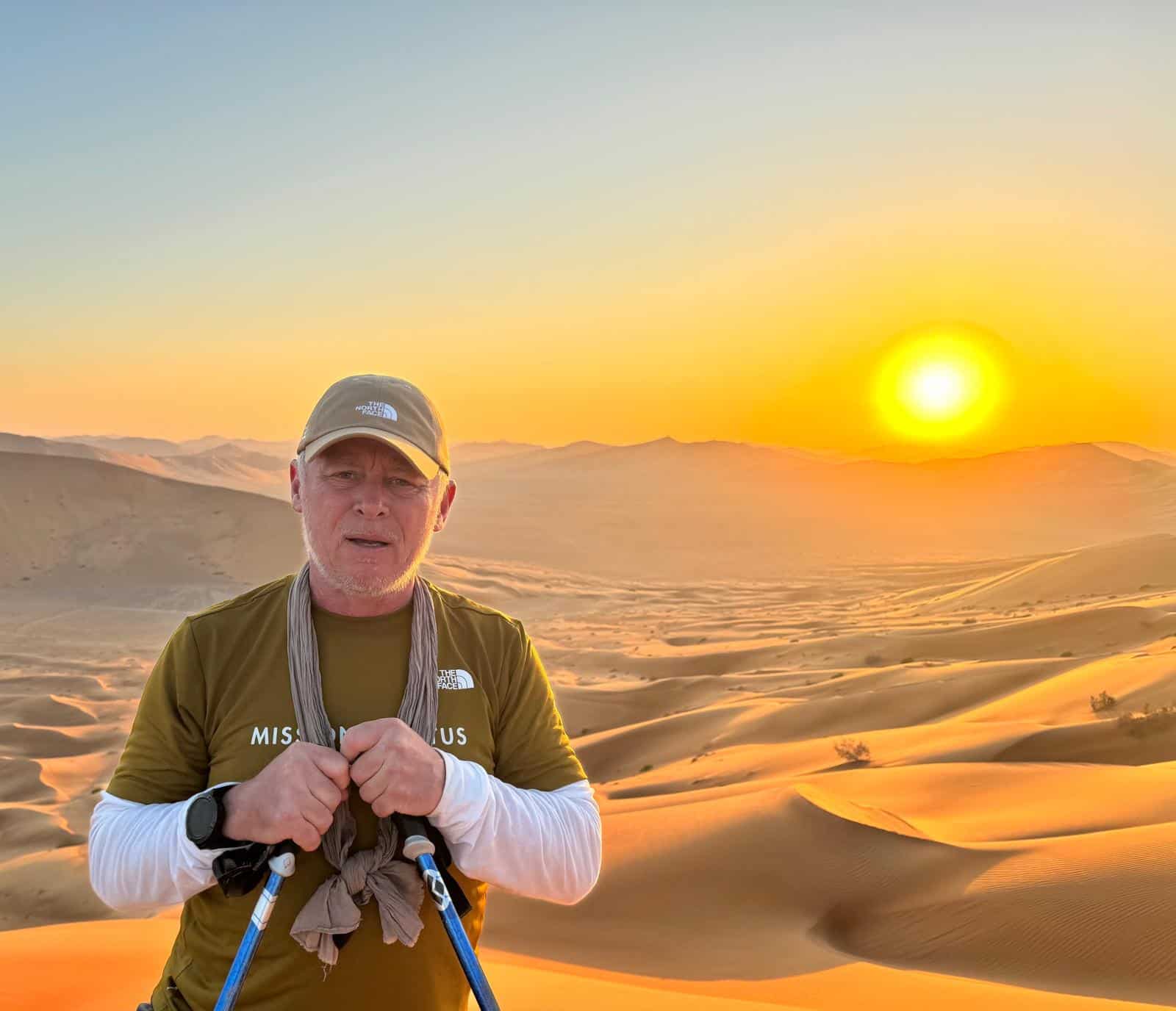
The desert presented not only environmental challenges but also moments of unexpected humour. “We’ve seen two rabbits, a crow, and a lizard,” David wrote. “We made feeble attempts to catch one of the rabbits, entertaining the idea of stew, but that bunny was surprisingly quick! In the end, it would have been a ‘catch and release’ exercise.”
The presence of two ravens, which followed the team for three days, also became a talking point. According to Bedouin folklore, ravens are an ominous sign, but the team chose to focus on their mission and stay optimistic.
Adding to the surreal nature of the desert experience, camel spiders – known for carrying unpleasant bacteria – made a few surprise appearances. “This morning, I found a surprisingly large camel spider sitting atop my flip flops,” David recounted. “I carefully released him back to the sands.”
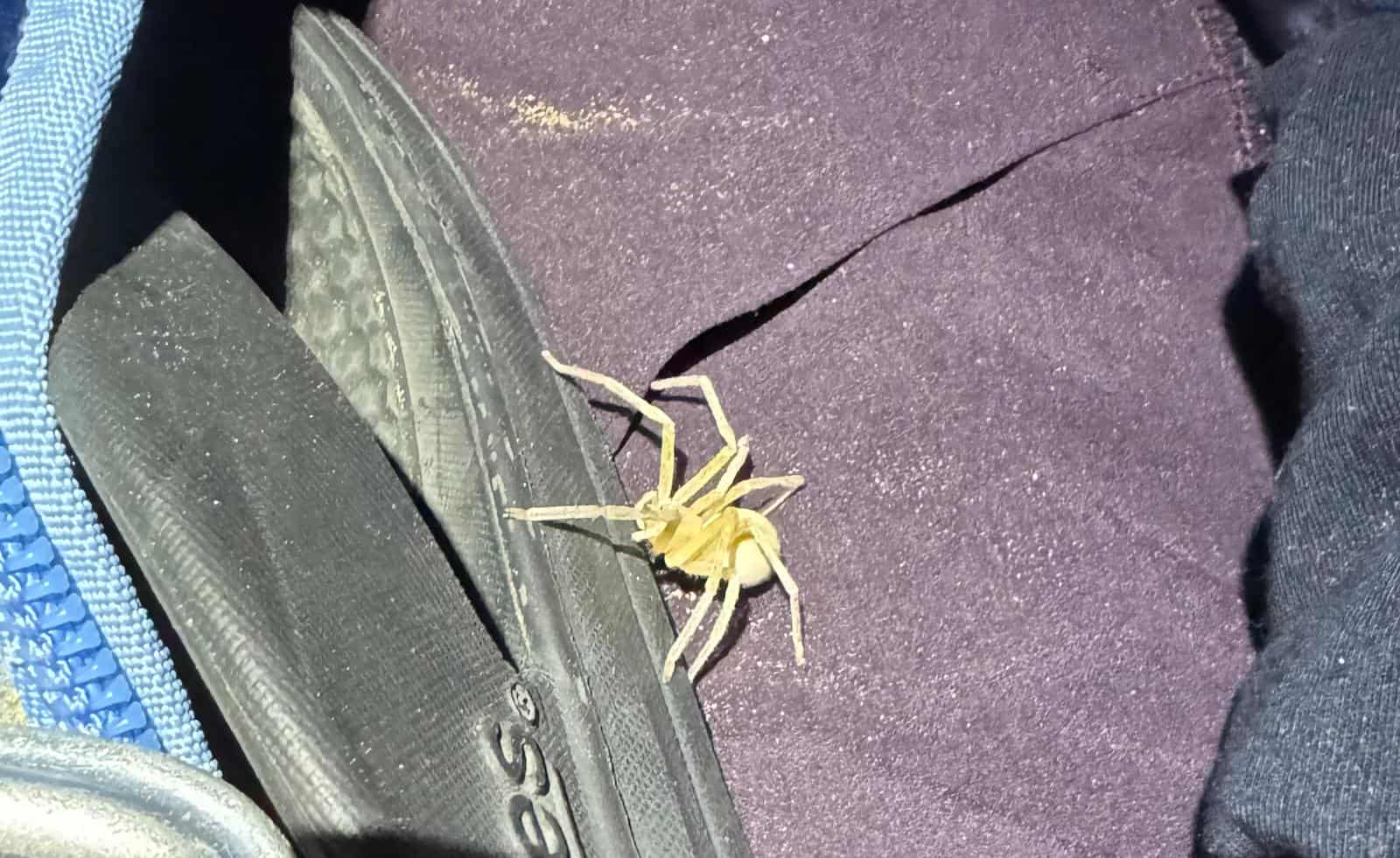
Support Along the Way
While the team has spent days trekking through uninhabited landscapes, they have not been entirely alone. The journey has been supported by two remarkable men, Yusuf and Mohammad, brothers of Omani descent and experts in desert survival.
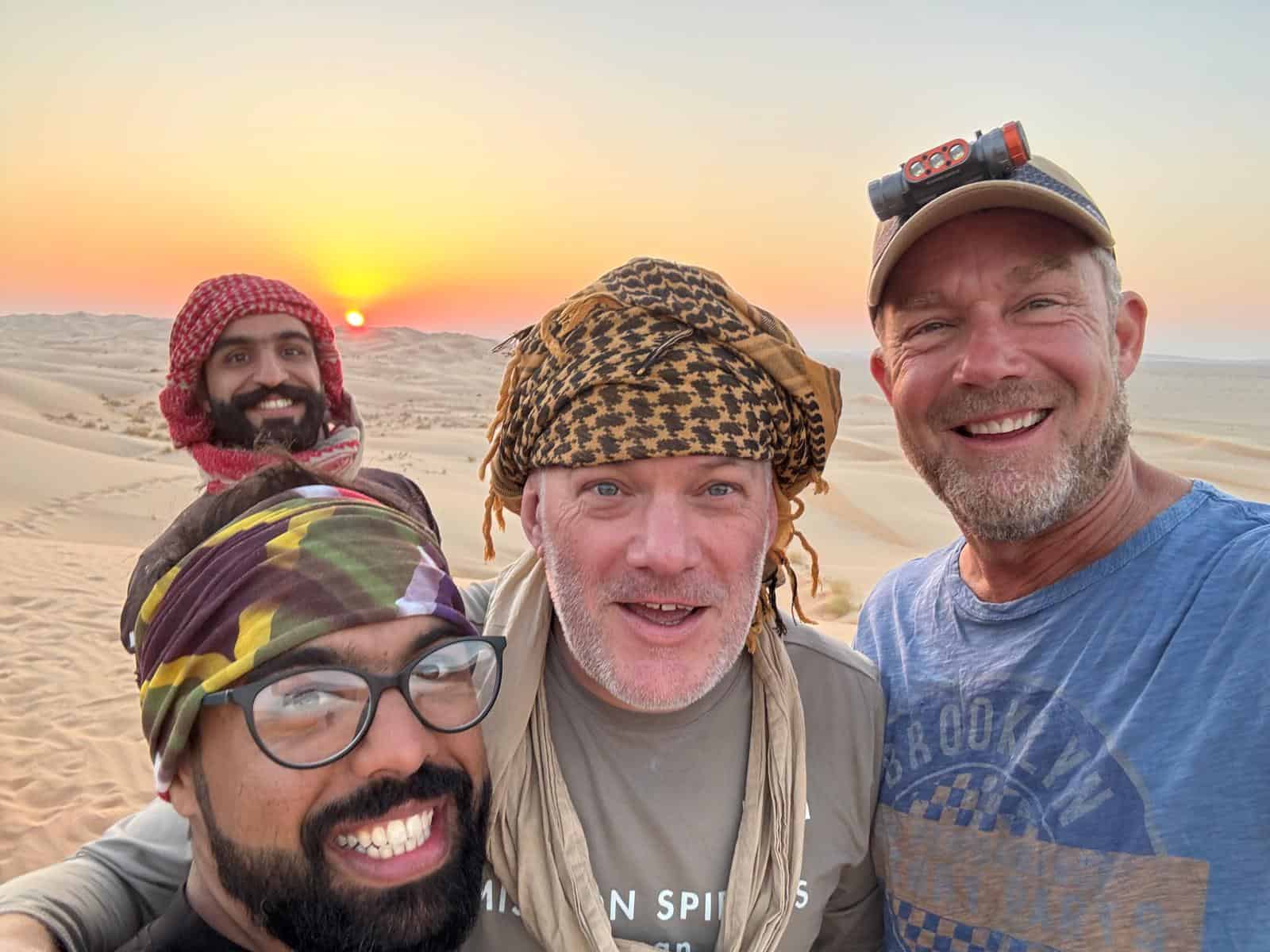
“We say good morning to them each pre-dawn morning in the dark while we put on our boots, packs, and head out of camp,” David shared. “Then they meet us each day at our designated rendezvous point. Yusuf and Mohammad cross the desert in a well-equipped Toyota Land Cruiser, which we occasionally see perched atop a sand dune or at the end of tire tracks that lead through the sands. Usually, we do not know where they are, but I am quite sure they are always aware of our location. That we can navigate this terrain on foot surprises me. It’s hard to imagine how they can navigate these obstacles by truck, but they never let us down.”
Their presence has provided vital support, ensuring the team has the resources and assistance needed to overcome the Empty Quarter’s challenges.
Scientific Progress
A key focus of the Oman Expedition is the collection of 52 sand samples to advance research into micro and nanoplastics. During Phase 1, the team successfully collected 9 samples over 135km, along with control samples to test for contamination.
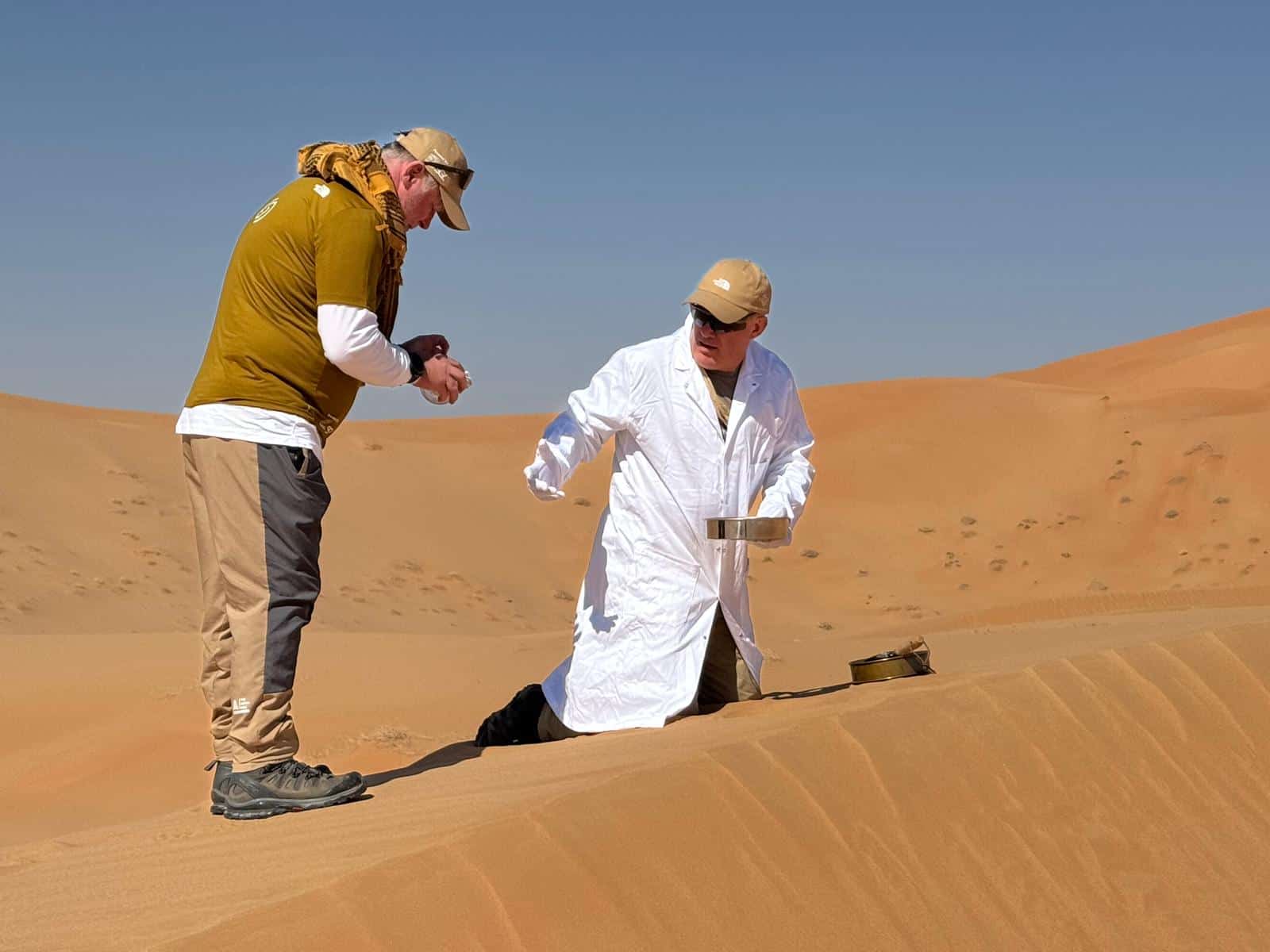
Ensuring the integrity of these samples is critical, and the Mission Spiritus team is grateful for the support of Gordano Support Group. They provided the specialised packaging and transportation vessels used in both the Antarctica and Oman expeditions, safeguarding the scientific quality of the samples. Alan Chambers acknowledged their contribution: “Gordano’s support has been invaluable in enabling us to maintain the highest scientific standards throughout our mission.”
“The sand varies from a dark reddish-brown, which comes from the mountains of Muscat, to lighter, whiter sand that blows up from the Arabian Sea,” explained Billy Perham. The team also collected a core sample of the harder desert floor, providing researchers at Columbia Climate School’s Lamont-Doherty Earth Observatory with material to study the presence of nano plastics at different depths over time.
Current Status and Looking Ahead
After six days of trekking, the team has reached Muqshin, where they are currently enjoying a much-needed rest day. This break provides an opportunity to recover, tend to injuries, and prepare for the next phase of the expedition.
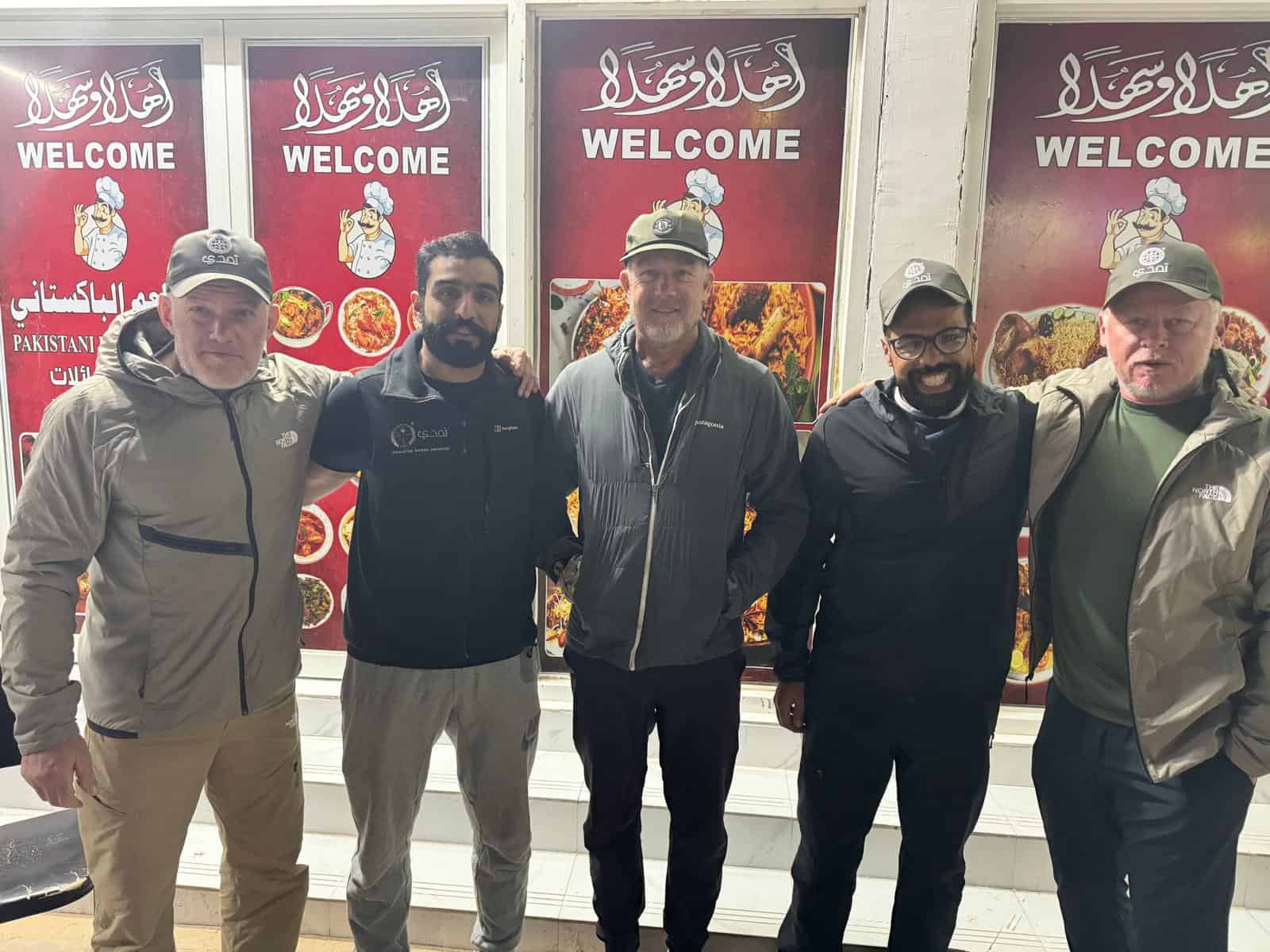
Phase 2, beginning on Tuesday, January 14th, will see the team embark on a 130km journey from Muqshin to Sahmah, continuing their mission of advancing environmental research and testing human endurance in the vast desert.
“The desert is unbelievably beautiful and serene. It is also inhospitable,” David reflected. This sentiment captures the duality of the mission – enduring the challenges of the Empty Quarter while uncovering the vital insights needed to protect our planet.
Follow the Journey
This blog is the second of five in our series covering highlights of the Oman Expedition. Upcoming blogs will document each phase of the journey, providing insights into the challenges, progress, and discoveries along the way.
For more regular updates, follow Mission Spiritus on Instagram and LinkedIn, where we’ll share on-the-ground progress, images, and stories from the team as they take on this extraordinary expedition.
You can learn more about Mission Spiritus Oman here.



